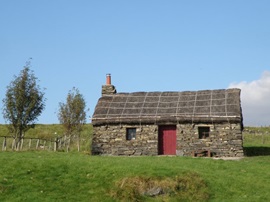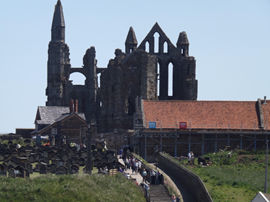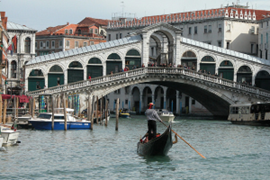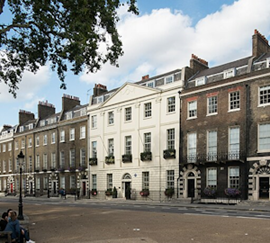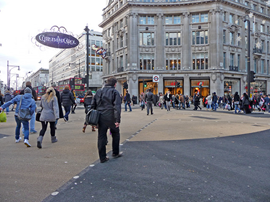Culture: Urban Future
Creativity and culture Culture: Urban Future – global report on culture for sustainable urban development UNESCO (no author or editor cited), 2016, 304 pages.
Culture: Urban Future was launched at the Third United Nations Conference on Housing and Sustainable Urban Development in Quito, Ecuador, in 2016. It is central to an ambitious vision, ascribed selectively to certain of the 2030 United Nations sustainable development goals (www.un.org/sustainabledevelopment/sustainabledevelopment-goals/ notably goal 11), that positions the role of culture, from cultural heritage to cultural and creative industries, as both an enabler and driver of the environmental, social and economic dimensions of sustainable development.
In her foreword, Irina Bokova, director-general of Unesco, writes: ‘We must strengthen the cultural assets of cities, the heritage that provides a sense of meaning and identity to their inhabitants, and the creative opportunities that enhance... [their] vitality, liveability and prosperity’. The main text champions cultural expressions as giving ‘people the opportunity to identify themselves collectively, to read the traces of history, to understand the importance of traditions for their daily life, or to enjoy beauty, harmony and artistic endeavour’; affirms that ‘these are fundamental social and human needs that must be addressed in the context of urban development processes, not as optional extras’; and poses the core question: ‘How do we translate these realities into effective policies in sustainable urban planning?’
Part I of the report is divided into eight regional study areas, from Africa through territories of the former USSR, to Asia-Pacific and South America. Critiques include centralised planning and national policies where these inhibit local authorities from implementing context-specific strategies; and the absence of operational management plans for historic urban areas, effective development control systems, and land and building use definitions.
Plaudits are accorded to democratisation processes, emerging forms of governance and citizen participation, and integrated approaches to urban conservation and regeneration (cited with reference to Europe); and the instrumental role of culture and heritage in reversing post-industrial decline and the recovery or reuse of industrial heritage, particularly for ‘creative activities’ (with reference to North America).
Part II offers a thematic approach to the promotion of ‘culture for sustainable cities’, divided into:
- People: human-centred cities; inclusive cities; peaceful and tolerant societies; and creative and innovative cities.
- Environment: human-scale and compact cities; sustainable, resilient and green cities; inclusive public spaces; and safeguarding urban identities.
- Policies: sustainable local development; enhanced rural-urban linkages; improved urban governance; and financing sustainable urban development.
These sections all say the expected things using today’s fashionable words and are illustrated with numerous highly condensed case studies. They are carried forward to a summary of conclusions and recommendations that home in on concepts such as liveability, social cohesion, inclusion and urban resilience, all of which are represented as requiring a foundation based on culture and creativity.
Missing, however, are inclusive definitions of either culture or creativity, both of which, implicitly throughout the text, reflect the elitist perceptions of academia, related professions and kindred interests. To define culture in terms of ‘beauty’, as the architect Renzo Piano does, is – to this reviewer at least – trite. At best, this positions culture at the periphery of the main thrust of the 17 United Nations sustainable development goals.
In the heritage field, whereas the typologies of ‘heritage assets’ in the UK are continuously expanding, the quantification remains small and the outcomes lack inclusivity; much-publicised campaigns by SAVE Britain’s Heritage to counter ‘Pathfinder’, whether in the Whitefield district of Nelson or the Welsh Streets in Liverpool, confirm this. And the delimited definitions of creative occupations and industries upheld by the UK’s Department for Digital, Culture, Media and Sport – which mirror those adopted elsewhere – focused as they are on marketing, architecture, crafts, design, media, IT, publishing, museums and the performing arts, are significant for what they omit.
Such definitions would exclude the vast majority of the inventors and entrepreneurs of history, on whom our industrial cities – at least – depend for their existence as well as their heritage; and they barely touch the surface of the manifold challenges that face humanity and our planet today. To communicate beyond a restricted audience and to have mainstream impact, inclusive definitions are essential. We can not ‘promote creativity and innovation in urban development through culture’ if we do not innovate in the use of the baseline terminology.
Missing also, in the emphasis on the improvement of policies, is the critical human factor. What are the cross-disciplinary and specialist skills that are required for mediation and implementation? Brilliantly formulated policies will achieve nothing if the right people are missing and the spectrum and level of their skills is not developed. Urban heritage, for example, is a key component of a complex and dynamic system that engages with a multiplicity of actors beyond the heritage community. If this were formally recognised, locally, nationally and internationally, the status and effectiveness of conservation professionals would be much increased. We need to look to Unesco and others to spearhead this.
Culture: Urban Future is an important step along a path that still has a long way to go if culture in all its guises is to realise its potential as an enabler and driver for sustainable development.
This article originally appeared in IHBC’s Context 156, published in September 2018. It was written by Dennis Rodwell, an architect-planner and consultant in cultural heritage and sustainable urban development.
--Institute of Historic Building Conservation
Related articles on Designing Buildings Wiki
- Conservation.
- Development of sustainable rural housing in the Scottish Highlands and Islands.
- Helping achieve the UN's Sustainable Development Goals
- Heritage.
- IHBC articles.
- QSAND and the Sustainable Development Goals.
- Reconciling conservation and sustainable development.
- Securing Urban Heritage: agents, access, and securitization.
- Sustainable construction and development online course.
- Sustainable development.
- Sustainable Development Goals and civil engineering
- Sustainable Development Goals and the triple bottom line.
- Sustainable development: energy challenge
- The Institute of Historic Building Conservation.
IHBC NewsBlog
IHBC Publishes C182 focused on Heating and Ventilation
The latest issue of Context explores sustainable heating for listed buildings and more.
Notre-Dame Cathedral of Paris reopening: 7-8 December
The reopening is in time for Christmas 2025.
Stirling Prize-winning Salford building to be demolished
The Centenary Building will be bulldozed as part of the wider £2.5bn Crescent regeneration project
Volunteers work to transform 100-year-old ‘hidden’ building into bothy
The building, named Druimnashallag, is located southeast of Oban.
The new ‘Arches for HERs’ Demo site, from the Getty Conservation Institute via HE
It shows how organisations responsible for historic environment records (HER) management can benefit from its powerful features.
ICOMOS-CIF 2024 Symposium celebrates 40th anniversary in Venice
It aims to critically review current practices and theories of conservation of built heritage around the world, and more.
HES establishes new national centre for retrofit of traditional buildings
HES plans to develop the centre follows £1m of funding from UKRI Arts and Humanities Research Council.
High Court rejects oral appeal against tower block decision in historic Bloomsbury
The request was for a full Judicial Review hearing against Camden Council’s approval of a 74m-high tower block in Bloomsbury.
Mayor of London and Government announce bold plans to transform Oxford Street
Plans include turning the road into a traffic-free pedestrianised avenue, creating a beautiful public space.
Crystal Palace Subway, for 160th anniversary
The remarkable Grade II* listed Crystal Palace Subway in South London begins a new era following major restoration.










